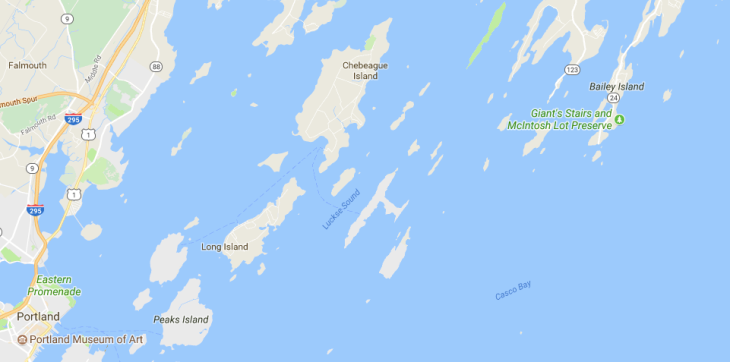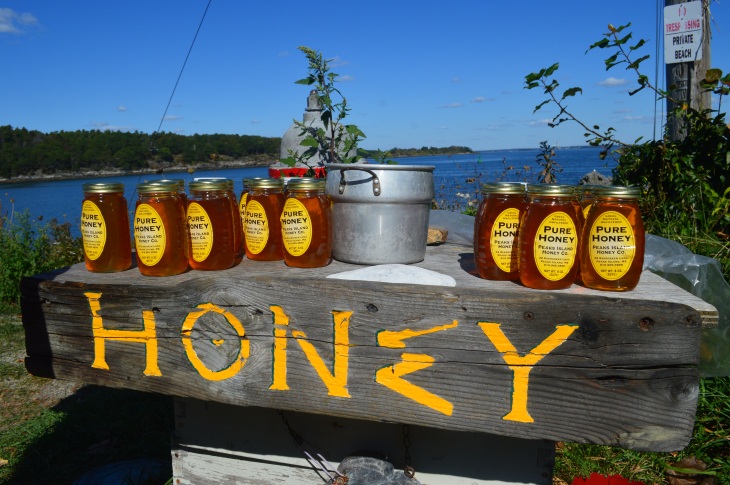Quick real-time update: apologies for delays in posting, we headed up to Bar Harbor (Acadia) and didn’t have a good wifi connection. As of today 10/5 we arrived in Boston and are catching up on posting. Summary of our Bar Harbor coming soon!
The weekend brought us even more boat adventures! There are 222 islands (at least) in Casco Bay, the bay on which Portland sits. A few of them are big tourist spots, but most are tiny islands with vacation homes, privately-owned islands, or islands that are too small to really have anything on them. There are a few islands that are populated year-round that welcome tourists. The farthest island that you can visit is Bailey Island, which is open only during the summer season. The tour closes in early September but they were running a couple special tours over the weekend we were in Portland so we took one on Saturday.

The boat ride to and from Bailey is about an hour and 45 minutes. It was overcast and REALLY cold on the ride there, but on the way back the sun started to peek through. The captain took us on an unusual route past the Portland Head Light, so we got a view that most passengers don’t get! (More on the Light later). I also got to play around more with shooting in manual mode and I think, finally, more of the pictures turned out properly lit rather than over/underexposed!
During the trip we learned that the little buoys we had been seeing all around the bay spaced a couple hundred feet from each other are lobster traps. On each buoy there are about 12 lobster traps, which explains why there’s SO MUCH lobster during the season! Just on our boat ride to Bailey we must have passed 1,000+ traps.
There’s not a lot to do on Bailey Island; the trip is more about seeing the whole bay and stopping for lunch at Cook’s, one of the only (if not the only) restaurant on the island. We docked right next to Cook’s and had their famous lobster roll. This is probably the best lobster roll we’ve had to date. We also tried the lobster wontons which were surprisingly good, and had blueberry pie which Maine is famous for because they grow a ton of blueberries.
Then we wandered around the island until the boat left back to the mainland.
The next day we wanted to explore the Portland Head Light, one of Portland’s most famous lighthouses, a little bit more. The Portland Head Light was first built in the early 1700s when lighthouses began to be widely developed in the US and abroad. The lighthouse sits in Cape Elizabeth, a small town adjacent to Portland proper, and was the center of the town in its early days. It went through many renovations, some of which made it taller, shorter, changed the type of lighting apparatus, etc. It was an actively kept lighthouse, with a keeper and his family living on site year-round, until 1967 when it became automated. It’s still a functioning lighthouse but there isn’t a keeper who lives on the grounds. The keeper’s house is now a museum and the light itself is a rotating lens that flashes every four seconds all day and night.
There’s a large park surrounding the lighthouse which was (predictably) gorgeous so we strolled around to enjoy the views.
Our next adventure was to Peaks Island (another boat ride!) to rent some bikes and explore the island. Peaks is one of the more popular islands of the 222 in Casco Bay. It has something like 350+ year-round residents, where most of the other islands have very few if any year-round residents. The bike rental shop ended up being closed unexpectedly when we got there but luckily we were able to get a golf cart from another rental shop just up the street! The island is only about 4 miles around so most people get around by golf cart.
We even found a little table with small jars of locally-made honey! The table was unattended so it was on the honor system. (Of course we left a few dollars).
Unfortunately our time in Portland was drawing to a close. Our last stop was the Portland Observatory. The Observatory was built when Portland was first developed and served as a watchtower. The watchman could spot ships coming into bay and the ship would raise two flags: one to tell the watchman where the ship was coming from, and the other to indicate what type of cargo they were carrying. The watchman would raise the same two flags on the watchtower so citizens in Portland would know what ships were coming in. When two-way radio communication was developed, the watchtower became obsolete and was turned into a landmark and museum. The views from the top of the 104 steps in the tower were unbeatable.
As sad as we were to leave Portland, we’re off to Acadia National Park in Bar Harbor, just a couple hours up the coast from Portland. See you there!
















































